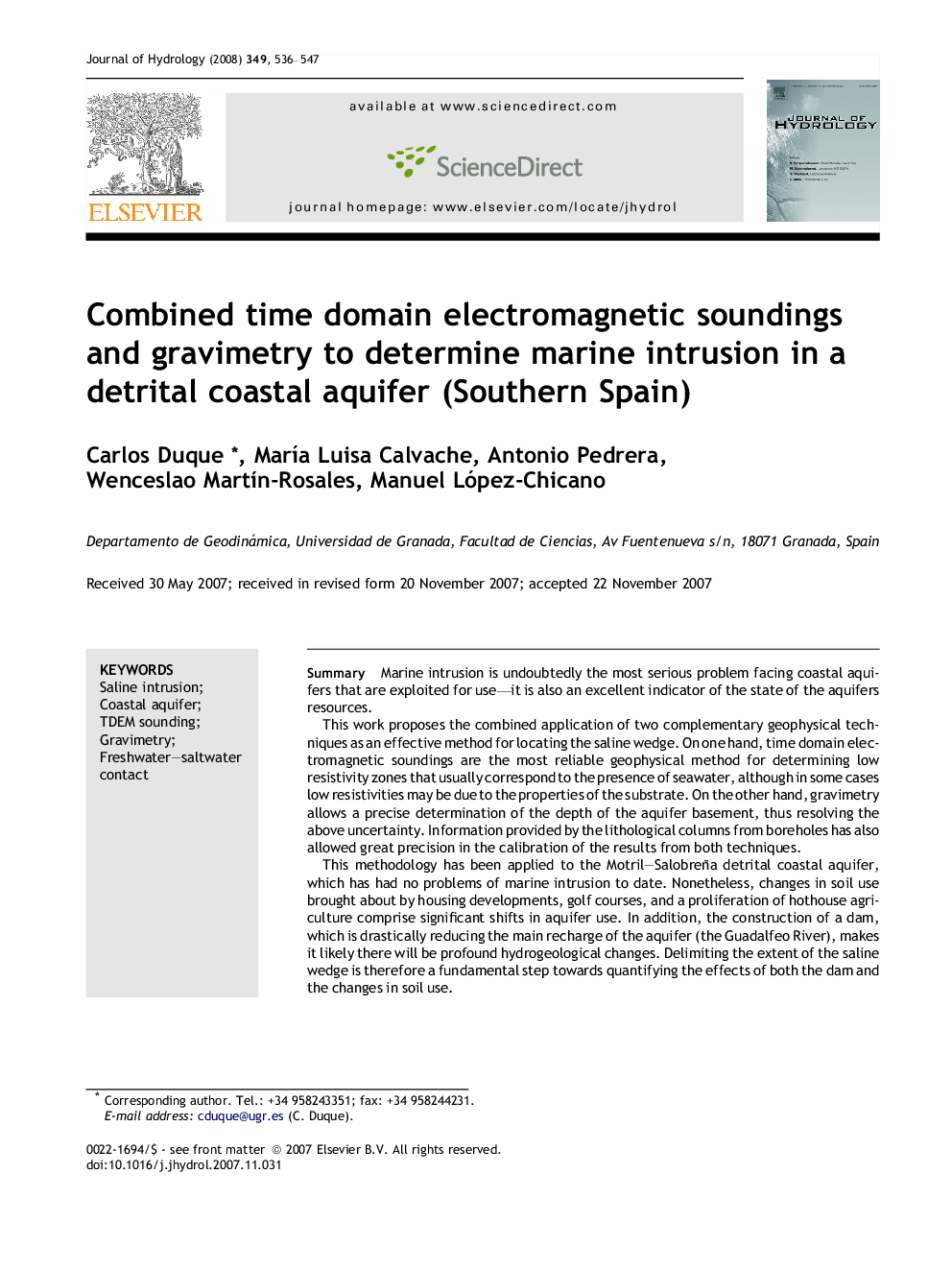| Article ID | Journal | Published Year | Pages | File Type |
|---|---|---|---|---|
| 4579561 | Journal of Hydrology | 2008 | 12 Pages |
SummaryMarine intrusion is undoubtedly the most serious problem facing coastal aquifers that are exploited for use—it is also an excellent indicator of the state of the aquifers resources.This work proposes the combined application of two complementary geophysical techniques as an effective method for locating the saline wedge. On one hand, time domain electromagnetic soundings are the most reliable geophysical method for determining low resistivity zones that usually correspond to the presence of seawater, although in some cases low resistivities may be due to the properties of the substrate. On the other hand, gravimetry allows a precise determination of the depth of the aquifer basement, thus resolving the above uncertainty. Information provided by the lithological columns from boreholes has also allowed great precision in the calibration of the results from both techniques.This methodology has been applied to the Motril–Salobreña detrital coastal aquifer, which has had no problems of marine intrusion to date. Nonetheless, changes in soil use brought about by housing developments, golf courses, and a proliferation of hothouse agriculture comprise significant shifts in aquifer use. In addition, the construction of a dam, which is drastically reducing the main recharge of the aquifer (the Guadalfeo River), makes it likely there will be profound hydrogeological changes. Delimiting the extent of the saline wedge is therefore a fundamental step towards quantifying the effects of both the dam and the changes in soil use.Seawater-saturated zones have a resistivity ranging from 0.5 to 5 Ω m, detrital sediments 8–400 Ω m, carbonates 80–300 Ω m, and schists from 2 to 60 Ω m. The current position of the saline wedge has been located at 100–200 m from the coastline, indicating a healthy state for the aquifer. Areas with wide and narrow mixing zones have been noted and related to differences in the hydrogeological characteristics of the aquifer.
